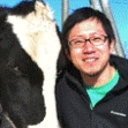Interferon-free therapy with direct acting antivirals for HCV/HIV-1 co-infected Japanese patients with inherited bleeding disorders.
Nøkkelord
Abstrakt
BACKGROUND
Almost 30 years ago, about 30% of Japanese hemophiliacs became infected with HIV-1 and hepatitis C virus (HCV) after receiving contaminated blood products. While several studies have reported the high efficacy and safety of direct acting antivirals (DAA) in HIV-1 co-infected patients, such data are limited in hemophiliacs.
METHODS
We conducted a single-center, open-label study involving 27 Japanese patients (median age; 45 years) with inherited bleeding disorders who were co-infected with HCV/HIV-1. Patients with HCV genotype 1 (GT1) and GT4 received ledipasvir (90 mg) plus sofosbuvir (400 mg), those with HCV GT2 received sofosbuvir plus weight-based ribavirin, and those with HCV GT3 received daclatasvir (60 mg) plus sofosbuvir. Treatment was continued for 12 weeks in all patients. The primary endpoints were rate of sustained virologic response at 12 weeks after end of therapy (SVR12) and occurrence of adverse events during DAA therapy.
RESULTS
Eighteen (67%) patients had had received interferon-based therapy, and 11 (41%) had compensated cirrhosis. HCV genotypes were GT1a 4 (15%), GT1b 16 (59%), GT1 undetermined 2 (7%), GT2a 1 (4%), GT3a 3 (11%) and GT4a 1 (4%). All patients were on combination antiretroviral therapy (cART) and had undetectable HIV-1 viral load (<20 copies/μL) at baseline. All patients achieved SVR12. Serious adverse events were observed in 3 patients: arteritis of the leg, which resolved after completion of DAA therapy, asymptomatic QT prolongation and gastrointestinal hemorrhage. cART failure was noted in one patient due to emergence of raltegravir resistance during ledipasvir/sofosbuvir treatment. Although α-fetoprotein, Mac-2 binding protein glycosylation isomer (M2BPGi), and Fibro Scan (FS) scores decreased in most patients during DAA therapy, M2BPGi (>2.0 cutoff index) and FS scores (>15.0 kPa) were still high in 6 patients at week 36.
CONCLUSIONS
DAA therapy is effective in all patients. However, adverse events and efficacy of cART should be monitored closely.



